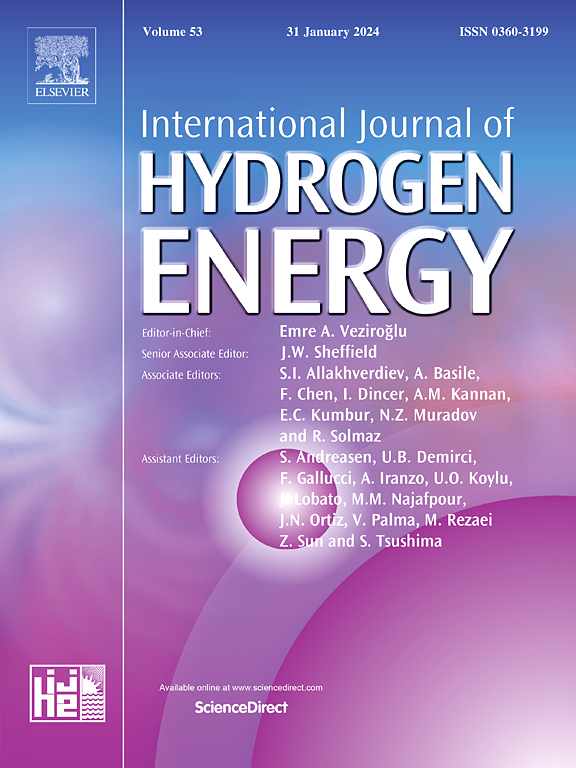The roles of hydrogen energy in ports: Comparative life-cycle analysis based on hydrogen utilization strategies
IF 8.1
2区 工程技术
Q1 CHEMISTRY, PHYSICAL
引用次数: 0
Abstract
Hydrogen energy is a promising solution for prompting low-carbon port development. This study introduces two hydrogen utilization strategies: hydrogen consumption-driven strategy (HCDS) and hydrogen storage-driven strategy (HSDS). Using data from a real port and a life-cycle assessment approach, a case study is conducted to compare their economic and ecological performances. The results show that HCDS enhances economic benefits, with an annualized cost of 66.1 million CNY, which is 11% lower than HSDS. Additionally, HCDS is sensitive to electricity prices and grid carbon emission factor. In contrast, HSDS offers superior ecological benefits, with an annualized carbon footprint of 31,300 tons of CO₂, which is 12% lower than HCDS, and is mainly sensitive to purchase prices and emission factors of electricity and hydrogen. This study provides critical insights into the trade-offs between economic and ecological performance under different hydrogen utilization strategies, offering practical guidance for implementing hydrogen energy system applications in ports.

求助全文
约1分钟内获得全文
求助全文
来源期刊

International Journal of Hydrogen Energy
工程技术-环境科学
CiteScore
13.50
自引率
25.00%
发文量
3502
审稿时长
60 days
期刊介绍:
The objective of the International Journal of Hydrogen Energy is to facilitate the exchange of new ideas, technological advancements, and research findings in the field of Hydrogen Energy among scientists and engineers worldwide. This journal showcases original research, both analytical and experimental, covering various aspects of Hydrogen Energy. These include production, storage, transmission, utilization, enabling technologies, environmental impact, economic considerations, and global perspectives on hydrogen and its carriers such as NH3, CH4, alcohols, etc.
The utilization aspect encompasses various methods such as thermochemical (combustion), photochemical, electrochemical (fuel cells), and nuclear conversion of hydrogen, hydrogen isotopes, and hydrogen carriers into thermal, mechanical, and electrical energies. The applications of these energies can be found in transportation (including aerospace), industrial, commercial, and residential sectors.
 求助内容:
求助内容: 应助结果提醒方式:
应助结果提醒方式:


